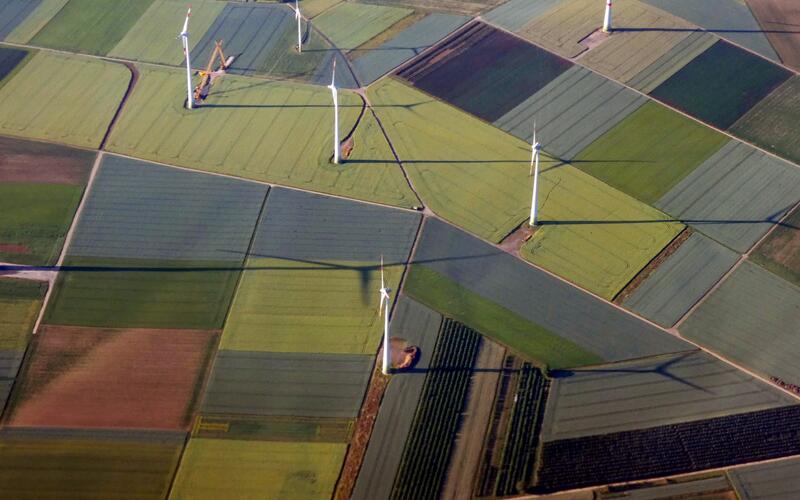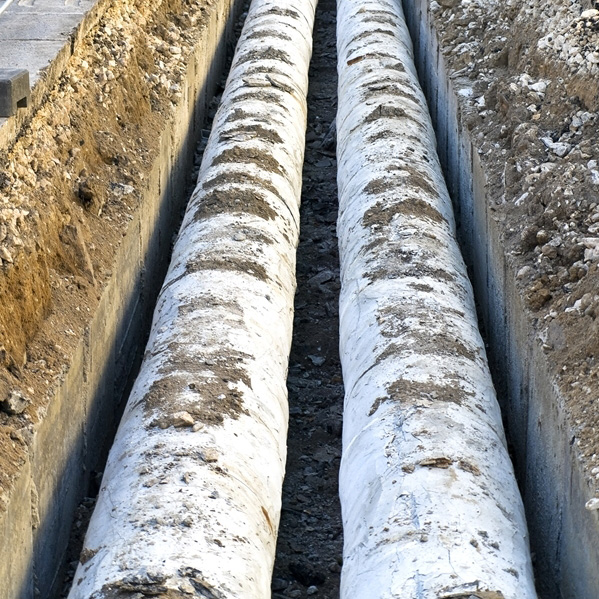Leveraging material flows to accelerate resource efficiency: Current status, challenges & opportunities

Leveraging material flows to accelerate resource efficiency: Current status, challenges & opportunities
Material flow analysis (MFA) is a robust methodology that promotes resource efficiency at multiple scales. When combined with sustainability tools like economic input-output models and life cycle assessments, MFAs can provide unique insights to achieve sustainability objectives. To maximize its utility, diverse stakeholders each have a role to play in innovation to overcome current implementation challenges.
Cullen, J. M., & Cooper, D. R. (2022). Material flows and efficiency. Annual Review of Materials Research, 52, 525-559.
Graedel, T. E. (2019). Material flow analysis from origin to evolution. Environmental Science & Technology, 53(21), 12188-12196.
Baars, J., Rajaeifar, M. A., & Heidrich, O. (2022). Quo vadis MFA? Integrated material flow analysis to support material efficiency. Journal of Industrial Ecology, 26(4), 1487-1503.
Reck, B. K., Müller, D. B., Rostkowski, K., & Graedel, T. E. (2008). Anthropogenic nickel cycle: Insights into use, trade, and recycling. Environmental science & technology, 42(9), 3394-3400.
The Economist. (2023, February 28). How America plans to break China’s grip on African minerals. The Economist; The Economist. https://www.economist.com/middle-east-and- africa/2023/02/28/how-america-plans-to-break-chinas-grip-on-african-minerals
The Economist. (2022, March 26). The transition to clean energy will mint new commodity superpowers. The Economist; The Economist. https://www.economist.com/finance-and-economics/2022/03/26/the-transitio…
The clean energy transition is critical to achieving global climate goals, but it comes with new material and resource requirements. According to the International Energy Agency (IEA), procurement of clean energy by 2040 is projected to require significantly greater consumption of lithium, graphite, nickel, and cobalt. Such predictions have informed conversations and trade partnerships among global stakeholders. An article recently published in The Economist indicates that this year’s Mining Indaba event, Africa’s largest annual mining conference, attracted the largest delegation from the United States to ever attend. Guests included officials from the White House, the Department of State, the Department of Commerce, and the Department of Energy. This level of engagement is unsurprising, given that the continent is home to 32 percent of the world’s mineral resources. But how do researchers quantify the source, stock, flow, and use of materials across global geographies over time? And how might these quantities serve as the basis for consumption forecasts and inform the focus of trade partnerships among policymakers? What are the current challenges involved in quantifying material flows, and how can they be addressed to inform resource efficiency strategies?
Material flow analysis (MFA) is a methodology that quantifies how the materials that enable modern society are used, reused, and lost throughout a material flow system. Its origin dates back several thousands of years ago, from methods employed in counting crops and herds. It follows a similar approach employed by accountants in balancing financial sheets, but since MFA incorporates analysis of material heterogeneity, its methods are even more nuanced. Recently, MFAs have been applied at multiple scales, including industry, national, and regional levels, and aim to improve resource efficiency. In a 2022 paper published in Annual Review of Materials Research, Cullen and Cooper point out that MFAs reveal opportunities for enhanced material efficiency in industrial systems. MFAs also help quantify the benefits of implementing material efficiency strategies across system value chains. This kind of quantification is possible through forecasts that project future availability of materials and consider key parameters.
Experts continue to improve applications of MFAs across contexts. Due to increasing sustainability concerns and a new emphasis on a circular economy, MFAs and adjacent tools like Life Cycle Assessments (LCAs) have seen a rise in use. Industrial and trade associations have employed MFAs to better understand material losses along supply chains and to identify recycling priorities. At the global level, Reck et al. applied a multi-level MFA to analyze the anthropogenic nickel cycle. This study revealed nickel’s dominant end uses, losses along its life cycle, and which countries are most involved. According to Reck and colleagues, the nickel cycle is dominated by seven countries or territories: the United States, China, Hong Kong, Japan, Germany, Taiwan, and South Korea. Most nickel use happens in three sectors: a quarter ends up in industrial machinery, a fifth ends up in buildings and infrastructure, and another fifth goes toward transportation. Both country and end use statistics are critical in informing sustainability designers on hotspots for efficiency improvements. For example, reducing the use of nickel in the top three sectors alone could provide significant reductions in global nickel demand and consumption. On a broader scale, MFA has improved as a method over time, with a widened scope of materials represented, software development, and expanded analysis that spans both natural and anthropogenic flows.
Despite its advantages, increased application, and methodological improvements, there are still challenges that hinder the widespread use of MFAs in diverse contexts. These challenges include incomplete and fragmented data, the absence of economic mechanisms in MFA, limited technological detail, and extensive time and resource investment required for completing MFAs, as mentioned in a paper recently published in Journal of Industrial Ecology by Baars et al. Even still, some progress has been made in integrating MFAs with data from Environmentally Extended Input-Output (EEIO) models to address the concern of economic mechanisms. Through their application, integrated MFAs with economic metrics provide insights about material and cost savings from improved efficiency activities which inform material procurement strategies.
A 2019 paper by Professor Graedel, Clifton R. Musser Professor Emeritus of Industrial Ecology and Professor Emeritus of Chemical Engineering at Yale, praises the advantages that MFAs offer, but also points out potential areas for improvement. Most notably, suggested improvements involve expanding the limited material flow databases, especially in material recycling and remanufacturing. The combination of materials in individual products, such as alloys, threaten the accurate identification and quantification of unique material flows. Data challenges and the extensive time and resource investment required for completing MFAs may explain why they are used less frequently by individual companies and instead are more likely to be applied by large industry associations to inform long-term forecasting and planning. It is also worth noting that despite increased use of MFAs, data is still lacking for certain global regions—particularly those with concentrated numbers of developing counties.
Addressing these challenges will help optimize existing MFA methodologies and expand their use to drive resource efficiency. By reviewing MFA applications over time and drawing from relevant expertise, researchers have recommended technological, social, and methodological pathways to address shortcomings in MFA use. There is an ongoing need to improve material flow statistics, especially for recycling and remanufacturing, to ensure the accuracy of MFA studies. Additionally, technological innovations that apply machine learning and other relevant tools like NIR spectroscopy to promote material identification and classification will be beneficial. Efforts to reduce the complexity of MFA studies as well as its time and resource demands will improve the methodology, and encourage use by smaller companies and industries with limited resources. Finally, the geographic coverage of MFA data could be expanded to include underrepresented regions like the African continent, which contributes a significant share of global resource extraction and use.
The benefits of MFA are only recovered if the novel insights it generates serve as a basis for decision-making and policy development. It is therefore essential to establish a platform for diverse stakeholder dialogue to ensure that the full benefit of the value of MFAs for policy and long-term industry decisions is realized. Such platforms will create an avenue for MFA practitioners to receive feedback from their audience on improving their output for maximum utility. Finally, upstream data providers will benefit from insights on improving data collection practices for enhanced accuracy. For example, the International Resource panel has been pivotal in promoting discussions around global material flows. But it will be necessary to establish localized MFA communities and platforms to contribute to broader global objectives. Similar examples on the LCA front include the American Center for Life Cycle Assessment, the European Platform on Life Cycle Assessment, and the Life Cycle Initiative.
Increased use of MFAs provides immense benefits, including resource efficiency and climate change mitigation. However, effective application requires input from diverse stakeholders across product and system value chains. It is evident from research that progress has been made, but progress must continue to maximize the benefits of this powerful, sustainable design methodology. By addressing data challenges for improved MFA accuracy, expanding the geographical coverage of MFA studies, and integrating MFA methodologies with economic and environmental mechanisms, stakeholders can move a step closer to generating high-quality MFAs to drive resource efficiency globally across multiple scales.




